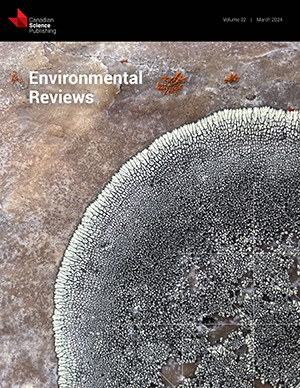关于溶解黑碳的分析方法、化学结构、分布特征、来源和生物地球化学过程的综述
IF 5.1
3区 环境科学与生态学
Q1 Environmental Science
引用次数: 0
摘要
生物质和化石燃料的不完全燃烧会产生各种化学性质不同的热解残留物,统称为黑碳(BC)。在这些残留物中,溶解黑碳(DBC)是水溶性部分,是全球溶解有机碳(DOC)池的重要组成部分。因此,它对水生碳循环和全球气候变化产生了影响。由于其独特的分子结构,DBC 在水生环境中表现出较低的反应活性,从而影响有机污染物和重金属的毒性和环境地球化学行为。虽然近年来有关二溴环十二烷的研究激增,并产生了宝贵的见解,但在二溴环十二烷的归宿和循环方面仍然存在巨大的知识差距。本综述总结了 DBC 分析和测定方法的进展,并对各种分析技术的优势和局限性进行了严格评估。此外,它还全面考察了我们目前对 DBC 的了解,包括其分子组成、空间分布、来源和生物地球化学过程。该综述还强调了与定量和定性方法有关的普遍挑战,并着重指出了有关 DBC 物理化学转化的研究空白。总体目标是推动我们对 DBC 生物地球化学循环的理解。本文章由计算机程序翻译,如有差异,请以英文原文为准。
A review on the analytical methods, chemical structures, distribution characteristics, sources, and biogeochemical processes of dissolved black carbon
Incomplete combustion of biomass and fossil fuels yields a variety of chemically distinct pyrolysis residues collectively referred to as black carbon (BC). Among these residues, dissolved black carbon (DBC) constitutes the water-soluble fraction, making it a significant component of the global dissolved organic carbon (DOC) pool. Consequently, it exerts an impact on the aquatic carbon cycle and global climate change. Owing to its unique molecular structure, DBC exhibits reduced reactivity in aquatic environments, thereby influencing the toxicity and environmental geochemical behavior of organic pollutants and heavy metals. While recent years have seen a surge in studies on DBC, yielding valuable insights, significant knowledge gaps persist regarding the fate and cycling of DBC. This review consolidates the advancements in analytical and determination methods for DBC and offers a critical assessment of the advantages and limitations associated with various analytical techniques. Furthermore, it comprehensively surveys our current understanding of DBC, encompassing its molecular composition, spatial distribution, sources, and biogeochemical processes. The review also underscores prevailing challenges related to quantitative and qualitative methods and underscores research gaps concerning the physic-chemical transformation of DBC. The overarching aim is to advance our comprehension of the biogeochemical cycle of DBC.
求助全文
通过发布文献求助,成功后即可免费获取论文全文。
去求助
来源期刊

Environmental Reviews
ENVIRONMENTAL SCIENCES-
CiteScore
9.80
自引率
3.50%
发文量
45
审稿时长
>12 weeks
期刊介绍:
Published since 1993, Environmental Reviews is a quarterly journal that presents authoritative literature reviews on a wide range of environmental science and associated environmental studies topics, with emphasis on the effects on and response of both natural and manmade ecosystems to anthropogenic stress. The authorship and scope are international, with critical literature reviews submitted and invited on such topics as sustainability, water supply management, climate change, harvesting impacts, acid rain, pesticide use, lake acidification, air and marine pollution, oil and gas development, biological control, food chain biomagnification, rehabilitation of polluted aquatic systems, erosion, forestry, bio-indicators of environmental stress, conservation of biodiversity, and many other environmental issues.
 求助内容:
求助内容: 应助结果提醒方式:
应助结果提醒方式:


